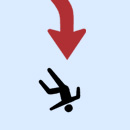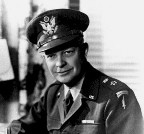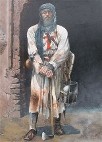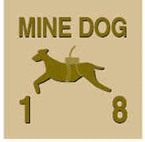ComradeP
Posts: 7192
Joined: 9/17/2009
Status: offline

|
quote:
ComradeP: Firstly, I'd like to say you've been absolutely exemplary in your forum support of this game. Your posts in particular have been really helpful in getting to grips with the game (ironically, however, helping demonstrate the lack of intuitiveness in the game design! By which I mean the necessity of so much forum support to get the game to do what one would like it to do!)
Thanks for the kind words.
The majority of the questions I've answered were about things that were either not clearly documented in the manual or which people missed in the manual. There have been fairly few questions about the interface, possibly because people are familiar with it through AAR's and because the interface is fairly well documented. Personally, I don't think the number of questions I initially answered last week (50-100 each day) was very high for a monster game like WitE.
Although I don't own WitP or WitP:AE, I do read the WitP:AE forum and the number of questions over there around the release seems comparable to those over here. SSG games, which I also test (although I was not officially a tester prior to the release of ATD2), usually don't attract too many questions as the interface doesn't change much between games and the changes that are made are clearly documented.
All in all, the release was more smooth than I had expected in terms of the storm of questions that would pop up, believe it or not.
quote:
My comments about the length it would take to complete a campaign PBEM are meant to illustrate that for me the mechanics of this game defeat its scope. This game is designed to simulate the entire campaing, yet I cant ever see myself doing so, short of literally playing for a year or more on one campaign. Others may be happy with this, for me this is an unrealistic goal, sadly.
The length of the full campaign and the scale is is why this is a monster game. I can perfectly understand it if you prefer games with a smaller scope or with a more limited number of turns, but weekly turns for a game like this are already an abstraction level higher than the turns in most wargames (which tend to be per day or per part of a day).
quote:
Stack select: for me this is a classic example of bad design, nothing to do with taste. The question is, 90% of the time when you click a hex, what is your likely desired outcome? That all units be selected, or just one? With air bases, hqs, armour, infantry, units of different MPs all occupying the same hexes, the answer is the latter. The other point is, which system can lead to mistakes? If all units are selected, I might accidentally move my HQ together with my combat units if I forget to deselect. If I am only selecting one unit, this is impossible. There is no room for taste in this case IMO, it is simply a bad design choice. Same applies in the auto-selection of units in the destination hex. I find it hard to think of a single situation where this would be desirable, let alone that it be applied to 100% of situations.
I agree that it can be cumbersome, no argument there, but whether it actually bothers you is what I'd call a matter of taste or preference. Aside from this, I mostly play SSG games, so it takes me a few moments to go from single unit selection/last selection reappearing to full stack selection, but you can avoid a lot of what you would call frustration by the way you place your counters.
For me, the cases where I need one unit after moving it into a stack are few, as I usually want at least two, so both for single unit selection and full stack selection it takes me one click to get what I want. I can understand that if you only want a single unit, two additional clicks will feel like a tiresome process after a while, but it doesn't really bother me, nor did it ever really do. That might be because SSG games remembering the last stack selection also often means I don't end up with the stack I want the next turn.
quote:
Comparisons to HPS/WitP: my point exactly - to my mind a gamer could only think that WitE is a modern and intuitive UI if they were comparing to these other games, which are lets face it stone age in their UI design. Compared to software from any other walk of life - gaming, social networking, wordprocessing, business, etc - I feel that games like these rely heavily on goodwill from the user to ignore/come to terms with huge shortcomings in their UI design. UI is everything in today's world, and the better that UI gets in the rest of our lives - pervading our mobiles, ipods, tv menus, dvd players, internet browsers, etc - the harder it is to bring yourself to step back in time and adapt to something as cumbersome as this. I think this is a serious point for the future of grog gaming, actually, as I wonder where the future market for this kind of product is? Will kids brought up on truly intuitive UI have any time for something as obdurate as this? Would be interesting to see the demographic spread of plays of WiTE.
Again no argument that many wargames use an extremely primitive user interface, as if the designers just wanted to copy a boardgame and suddenly thought "oh, wait, this is on the PC, so we need a UI too". To me, WitE is a fairly big step in the right direction, but I see your point if you're saying that, to you, the step isn't big enough. I might just've be too accustomed to less than stellar interfaces that I can appreciate the UI of WitE (and SSG games, for that matter) like I do.
quote:
Supply information: I am talking about seeing a supply net relating to the turn that has just passed. It would be entirely historical for a division commander to telephone his hq and ask what happened to last week's supplies, and for him to tell him, well, the trucks got bogged down in the swamp, or encountered enemy patrols, or whatever. As the player, you would see a graphical representation of the route the supplies took in trying to reach the unit, which would probably change from green to red to show the degredation of the link, etc etc. The kind of thing we've seen in many other titles, but again here seems like a step backwards to be ommitted.
What I meant with the it not being historical comment is that it would not be historical, or perhaps even possible in the game, to see the supply situation after a move, as the supply situation at the end of your turn essentially only comes in play in your next turn, as during a turn there's no additional logistics phase. SSG uses supply units with a certain range, so you can check whether a unit is in supply at the end of your turn, but a single hostile unit movement can mess it up, so it's a guestimate at best. The way WitE handles logistics represents the other side of the spectrum.
quote:
What this all adds up to for me is a feeling of: "sheesh, after a day's play I'm pretty sure I'll never get to play an entire campaign from 41 to 45, which is after all what I bought this game for." In that sense, in the sense of being a game simulating the eastern campaign, to be really harsh, the game is not fit for purpose.
On this scale, this is the first PC wargame that really does modelling the Eastern Front mostly right, in my opinion. I have serious objections to the TOAW game system, WiR is seriously outdated by now and there are more or less no other contenders.
_____________________________
SSG tester
WitE Alpha tester
Panzer Corps Beta tester
Unity of Command scenario designer
|
 Printable Version
Printable Version




















 My son is heavy into arena and other pvp in game and at events (Pax, Blizzcon, etc) and he and his mates spend *hours* debating configurations of half a dozen mouse buttons based on class, spec, equipment, team (3x3, 5x5, whatever...) and myriad other arcana. Then they move to the number keys...
My son is heavy into arena and other pvp in game and at events (Pax, Blizzcon, etc) and he and his mates spend *hours* debating configurations of half a dozen mouse buttons based on class, spec, equipment, team (3x3, 5x5, whatever...) and myriad other arcana. Then they move to the number keys... 
 New Messages
New Messages No New Messages
No New Messages Hot Topic w/ New Messages
Hot Topic w/ New Messages Hot Topic w/o New Messages
Hot Topic w/o New Messages Locked w/ New Messages
Locked w/ New Messages Locked w/o New Messages
Locked w/o New Messages Post New Thread
Post New Thread